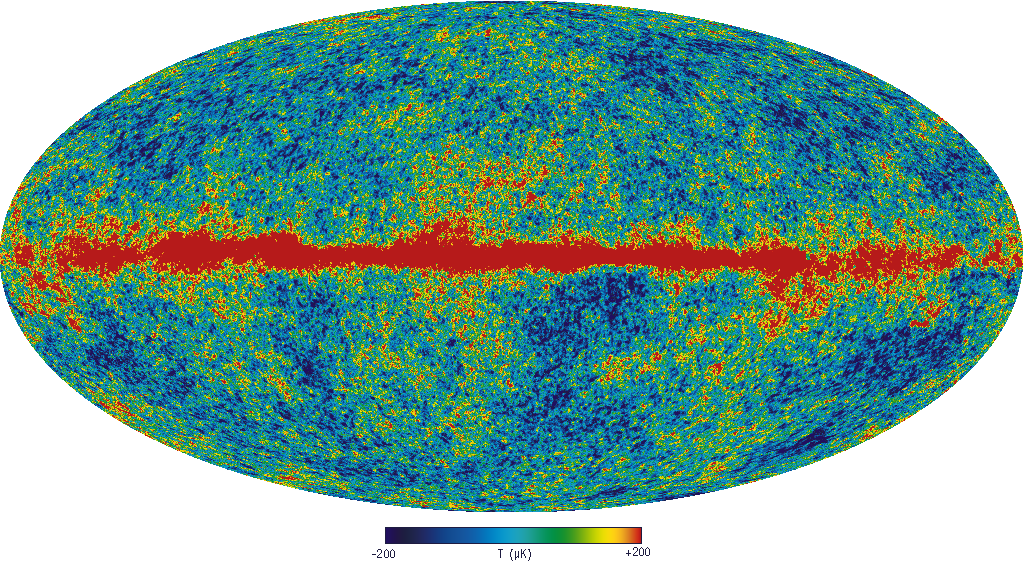
The Universe is most commonly defined as everything that physically exists: the entirety of space and time, all forms of matter, energy and momentum, and the physical laws and constants that govern them. However, the term “universe” may be used in slightly different contextual senses, denoting such concepts as the cosmos, the world or Nature.
Astronomical observations indicate that the universe is 13.7 ± 0.2 billion years old and at least 93 billion light years across. The event that started the universe is called the Big Bang. At this point in time all matter and energy of the observable universe was concentrated in one point of infinite density. After the Big Bang the universe started to expand to its present form. Since special relativity states that matter cannot exceed the speed of light in a fixed space-time, it may seem paradoxical that two galaxies can be separated by 93 billion light years in 13 billion years; however, this separation is a natural consequence of general relativity. Stated simply, space can expand with no intrinsic limit on its rate; thus, two galaxies can separate more quickly than the speed of light if the space between them grows. Experimental measurements such as the redshifts and spatial distribution of distant galaxies, the cosmic microwave background radiation, and the relative percentages of the lighter chemical elements, support this theoretical expansion and, more generally, the Big Bang theory, which proposes that space itself was created ex nihilo at a specific time in the past. Recent observations have shown that this expansion is accelerating, and that most of the matter and energy in the universe is fundamentally different from that observed on Earth and not directly observable (cf. dark energy). The imprecision of current observations has hindered predictions of the ultimate fate of the universe.

Experiments suggest that the universe has been governed by the same physical laws and constants throughout its extent and history. The dominant force at cosmological distances is gravity, and general relativity is currently the most accurate theory of gravitation. The remaining three fundamental forces and the particles on which they act are described by the Standard Model. The universe has at least three dimensions of space and one of time, although extremely small additional dimensions cannot be ruled out experimentally. Spacetime appears to be smoothly and simply connected, and space has very small mean curvature, so that Euclidean geometry is accurate on the average throughout the universe.
According to some speculations, this universe may be one of many disconnected universes, which are collectively denoted as the multiverse. In one theory, there is an infinite variety of universes, each with different physical constants. In another theory, new universes are spawned with every quantum measurement. By definition, these speculations cannot be tested experimentally.
Throughout recorded history, several cosmologies and cosmogonies have been proposed to account for observations of the universe. The earliest quantitative models were developed by the ancient Greeks, who proposed that the universe possesses infinite space and has existed eternally, but contains a single set of concentric spheres of finite size – corresponding to the fixed stars, the Sun and various planets – rotating about a spherical but unmoving Earth. Over the centuries, more precise observations and improved theories of gravity led to Copernicus’ heliocentric model and the Newtonian model of the solar system, respectively. Further improvements in astronomy led to the characterization of the Milky Way, and the discovery of other galaxies and the microwave background radiation; careful studies of the distribution of these galaxies and their spectral lines have led to much of modern cosmology.
Shortened article from Universe – Wikipedia. Published under the terms of the GNU Free Documentation License, Version 1.2
